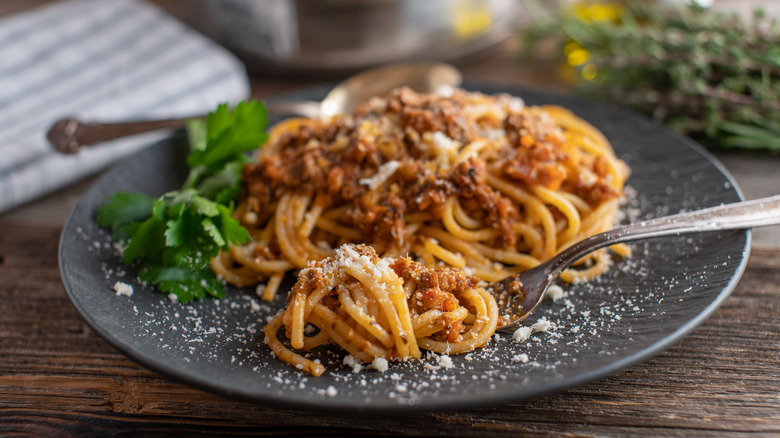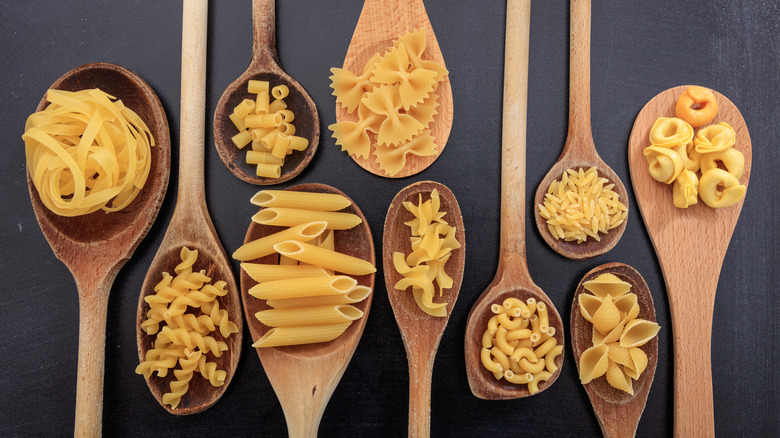Here's Why Italians Never Order Spaghetti Bolognese In Italy
Scan the menu of nearly any Italian restaurant in the United States, and you're likely to find one of the most popular and delicious styles of pasta dishes out there — spaghetti Bolognese. The rich, meaty, tomatoey sauce adds some extra protein and flavor to the familiar pasta, resulting in comfort food like no other. But head to the birthplace of pasta, and you won't hear a whisper of the delicious dish from Italians. It's not because Italian pallets don't like meat sauces and certainly not because they don't like pasta. It's actually due to some deeply held feelings of local pride and correct noodle deployment.
The dish that many around the world think of as spaghetti Bolognese is essentially split into two components in Italian minds. First, the sauce. Italians do eat a similar, though not identical, meat sauce known as ragù alla Bolognese. It shares components like ground beef or veal, veggies like onions, carrots, and celery, and a mix of spices and flavorings. Interestingly, very traditional ragù alla Bolognese has no tomato, which only became a common part of Italian cuisine in the 1800s.
Making the right pasta choice
However, it's the spaghetti part where Italians differ. In Bologna (where the sauce nominally hails from,) Mayor Virginio Merola has pushed back on the notable serving of the dish, going as far as to claim in a tweet that it is "fake news." Merola told RAI, via Insider, "Spaghetti Bolognese doesn't actually exist, yet it's famous the world over." He argued that locals prefer regional varieties like lasagne, tortellini, and tagliatelle instead. The latter shape is one that he and many other pasta purists would suggest as a good pairing for ragù alla Bolognese, as the broad noodle more easily holds the elements of the sauce. Pappardelle, rigatoni, and penne are also popular choices that accomplish the same thing.
It's important to note this isn't the only well-known Italian recipe that would be better described as Italian-American. Many of the most popular dishes at America's Italian restaurants aren't served in Italy. They are unique productions of 19th and 20th-century immigrants adapting to the changing tastes and ingredients of their new environments. That doesn't make them any less delicious. But, don't expect them (or spaghetti Bolognese) on the menu on your next trip to the birthplace of Italian cuisine.

